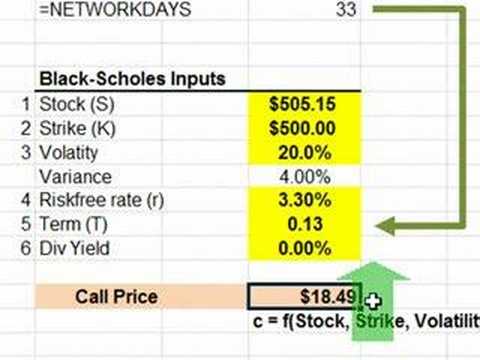Contents:


Our Goods & Services Tax course includes tutorial videos, guides and expert assistance to help you in mastering Goods and Services Tax. ClearTax can also help you in getting your business registered for Goods & Services Tax Law. However, in case the strategy does not pan out as intended, it results in lower earnings compared to interest expense. Dividend cover ratio reveals the ability of the business concern to maintain the dividend in future.
However, EBIDA just isn’t often utilized by analysts, who as a substitute opt for both EBITDA or EBIT. Understanding Earnings Before Interest, Depreciation and Amortization There are numerous ways to calculate EBIDA, such as adding interest, depreciation, and amortization to net income. The cost which is to be incurred even when a business unit is closed is a _____.
Please keep in mind that borrowing money to fund a company’s operations isn’t always a negative idea. The extra money from a loan can be used to grow a company’s operations, enter new markets, and improve its product offerings, all of which can help the company’s long-term success. Just upload your form 16, claim your deductions and get your acknowledgment number online. You can efile income tax return on your income from salary, house property, capital gains, business & profession and income from other sources. Further you can also file TDS returns, generate Form-16, use our Tax Calculator software, claim HRA, check refund status and generate rent receipts for Income Tax Filing. ClearTax offers taxation & financial solutions to individuals, businesses, organizations & chartered accountants in India.
- Capital gearing is a British term that refers to the quantity of debt a company has relative to its fairness.
- If you have previously used our Financial Dictionary, then the words checked and their meaning would be displayed under this category.
- There are many alternative formulas that relate the owner’s capital or equity to the long-term or short-term debt.
- The decrease the curiosity protection ratio, the higher the corporate’s debt burden and the greater the potential for chapter or default.
- In contrast, companies with a high gearing ratio from a stable industry may not pose a serious threat to lenders and investors.
It’s what is capital gearing ratio by dividing a agency’s whole liabilities by whole shareholders’ equity. Banks often have preset restrictions on the maximum debt-to-equity ratio of borrowers for various kinds of companies outlined in debt covenants. This is to inform that, many instances were reported by general public where fraudsters are cheating general public by misusing our brand name Motilal Oswal.
Starting a Business Without Money: Tips and Strategies for Bootstrapping Entrepreneurs
INTRODUCTION A cash book is a financial ledger that records all the transactions involving cash inflow and outflow in a business. In the fast-paced world of the stock market, a term that often pops up is “scrip.” If you’ve ever been intrigued by the world… When the average ratio of the industry is 0.8, and the competitor is 0.9; a company that is doing 0.3 or 0.6 is fairly at a good stature in the industry. A covenant may restrict you from paying dividends if money is still owing to you. In the former case, a company borrows a sum that is more significant in comparison to its equity strength.
Without affecting the ownership structure, a profitable company can use borrowed funds to generate more revenues and use the returns to service the debt. The term “gearing” refers to the proportion of a company’s capital structure that is provided by debt as opposed to equity . On the other hand, via offline or online equity trading investors seek to capitalize on the share price changes by buying stocks at a discount and selling stocks at a premium.

Therefore, current ratio measures the solvency and adequacy of working capital in a business. Any rise in the current ratio shows improved credit strength and fall indicates deteriorating credit strength. Although, the higher ratio may be good from the point of view of creditors; in the long run very high current ratio may also affect the profitability of the firm.
In contrast, companies with a high gearing ratio from a stable industry may not pose a serious threat to lenders and investors. Companies in this sector need high capital investments, and hence, their capital gearing ratio will be obviously high. It’s an indication that the strategy carried out by a corporation was fruitful. It means that the earnings of equity shareholders is increased by effective use of long term fixed interest bearing debt.
Capital Structure or
Measures the percentage of capital employed that is financed by debt and long term financing. The higher the gearing, the higher the dependence on borrowing and long term financing. Whereas, the lower the gearing ratio, the higher the dependence on equity financing. Traditionally, the higher the level of gearing, the higher the level of financial risk due to the increased volatility of profits.

Companies that have a unfavorable debt to fairness ratio could also be seen as risky to analysts, lenders, and traders as a result of this debt is an indication of financial instability. Therefore, analysts, buyers and creditors have to see subsequent figures to assess a company’s progress towards decreasing debt. In simple terms, capital gearing measures the proportion of a company’s funding that comes from debt compared to equity. A company with high capital gearing has a higher proportion of debt than equity, while a company with low capital gearing has a higher proportion of equity than debt. The level of capital gearing can be influenced by a range of factors, including the company’s business model, industry, and financing strategy. The Gearing ratio is one financial ratio that helps to compare some type of equity or Capital of the owner to funds borrowed by the company or their debts.
The ratio of capital gearing may differ with respect to the industry a company is in. Industries that require a large capital investment may have a high capital gearing ratio. Managers of companies undertake and execute trading on equity; whereas, equity trading can be undertaken by any individual or entity.
A greater ratio isn’t all the time a bad factor, as a result of debt is normally a cheaper source of financing and comes with elevated tax advantages. In industries requiring giant capital investments, gearing ratios will be excessive. Companies which might be in cyclical industries and have excessive gearing ratios could, therefore, be considered by traders as dangerous. In stable industries, nonetheless, a high gearing ratio could not present a priority. The term capital gearing refers to describe the relationship between fixed interest and/or fixed dividend bearing securities and the equity shareholders’ fund. Investors can use a company’s capital gearing as a key metric when evaluating its investment potential.
When debt-to-equity ratio is high, it increases the likelihood that the company defaults and is liquidated consequently. Increase within the required return of buyers and lenders means a rise in the price of capital to the corporate. The debt to equity ratio is a measure of a company’s financial leverage, and it represents the quantity of debt and equity being used to finance an organization’s belongings. A gearing ratio is a type of financial ratio that compares company debt relative to different financial metrics, such as total equity. Gearing represents a company’s leverage, meaning how much of the business funding comes from borrowed methods versus company owners .
Capital Structure or Leverage Ratio
Financial gearing, on the other hand, refers to the use of debt financing to fund a company’s operations. This way, the gearing ratio is the measurement of financial leverage that showcases the degree up to which the operations of a company get funded by debt financing versus equity capital. Here we need to understand specifically what is to be included in the numerator and the denominator. Common Stockholders’ equity in the numerator will include share capital, share premium, general reserves and participatory preference shares. The denominator will include long term fixed cost bearing capital like long term bonds, term loans and preference shares with fixed dividend payouts.
Though we have filed complaint with police for the safety of your money we request you to not fall prey to such fraudsters. You can check about our products and services by visiting our website You can also write to us at , to know more about products and services. Investors and lenders often regard a gearing ratio of less than 25% to be low-risk.
CIRCOR International Prepares for Profitable Q1 Earnings Report … – Best Stocks
CIRCOR International Prepares for Profitable Q1 Earnings Report ….
Posted: Thu, 04 May 2023 16:57:52 GMT [source]
By virtue of that, trading on equity is more beneficial to enhance shareholder’s value. A excessive gearing ratio reveals a high proportion of debt to fairness, while a low gearing ratio reveals the other. Thus, the next proportion of debt in the firm’s capital structure leads to higher ROE. Financial leverage advantages diminish as the chance of defaulting on curiosity payments increases.
File ITR, invest & save upto ₹46,800 in taxes on the go
The EBIDA measure removes the belief that the cash paid in taxes could be used to pay down debt, an assumption made in EBITDA. This debt fee assumption is made as a result of curiosity payments are tax deductible, which, in turn, could decrease the corporate’s tax expense, giving it extra money to service its debt. EBIDA, nonetheless, does not make the belief that the tax expense may be lowered by way of the curiosity expense and, subsequently, does not add it again to web revenue. This is just like the debt to fairness ratio, which is a financial structuring indicator , as well as a gearing ratio. Gearing represents a company’s leverage, that means how much of the business funding comes from borrowed methods versus company owners . However, high capital gearing can also be risky for companies that operate in industries with high levels of competition or market volatility.
TD Bank and First Horizon Scrap $13.4 Billion Merger – PYMNTS.com
TD Bank and First Horizon Scrap $13.4 Billion Merger.
Posted: Thu, 04 May 2023 13:02:11 GMT [source]
A company with a gearing ratio of two.zero would have twice as much debt as fairness. Depreciation and amortization are non-money expenses that do not actually impression cash flows, however interest on debt is usually a vital expense for some corporations. For this cause, net revenue minus capital expenditures, plus depreciation and amortization will be the better measure of money available for debt compensation.
A lower ICR means less earnings can be found to fulfill curiosity payments and that the business is more weak to will increase in interest rates. Please keep in mind that gearing ratios should only be compared between companies in the same industry, as these ratios are highly industry-specific. To begin with, businesses would not need to create additional income to pay off debt. Second, even if the companies have more cash, they will be able to put it to better use elsewhere, resulting in the debt being converted into stock. However, if a company wants to be in business for a long time, this is not a good strategy.
Allied Motion Reports Strong Operating Leverage on Record … – Silicon UK
Allied Motion Reports Strong Operating Leverage on Record ….
Posted: Wed, 03 May 2023 19:40:00 GMT [source]
The Capital Structure/leverage ratios of a company are financial ratios which measure the long term stability and structure of a company. These ratios are known as structural ratios which indicate how a business entity finances its overall operations and growth using different sources of funds. Although high gearing ratio outcomes point out excessive financial leverage, they don’t always mean that an organization is in monetary distress. While firms with higher gearing ratios do have more danger, regulated entities such as utility corporations commonly operate with greater debt levels. When a business finances its property and operations mainly by way of debt, creditors might deem the enterprise a credit danger and investors shy away.
- Internal management also uses these measures to forecast future profit and cash flows.
- By understanding capital gearing, companies can make informed decisions about their financing strategies and optimize their capital structure to maximize shareholder value.
- However, if a company wants to be in business for a long time, this is not a good strategy.
- Negative debt to equity ratio can also be a result of a company that has a unfavorable web value.
Gearing ratios represent a broad class of monetary ratios, of which the debt-to-fairness ratio is the best instance. All corporations have to balance some great benefits of leveraging their property with the disadvantages that come with borrowing dangers. This same uncertainty faces traders and lenders who work together with those corporations. Gearing ratios are one method to differentiate financially healthy companies from troubled ones. For example, suppose that the debt ratio of the company last year was 0.3, the average in the industry is 0.8, and the main competitor of the company has this ratio of 0.9. Now, more valuable information can easily be derived from this comparing gearing ratios.
Gearing is a measurement of a company’s financial leverage, and the gearing ratio is among the most popular strategies of evaluating an organization’s monetary health. The interest coverage ratio is a measure of a company’s ability to meet its curiosity payments. Interest coverage ratio is the same as earnings before curiosity and taxes for a time period, usually one 12 months, divided by curiosity bills for the same time interval. The interest protection ratio is a measure of the variety of instances a company may make the interest funds on its debt with its EBIT. The debt to equity ratio is a measure of an organization’s financial leverage, and it represents the amount of debt and equity getting used to finance an organization’s belongings. It’s calculated by dividing a firm’s complete liabilities by whole shareholders’ fairness.


Lascia un commento